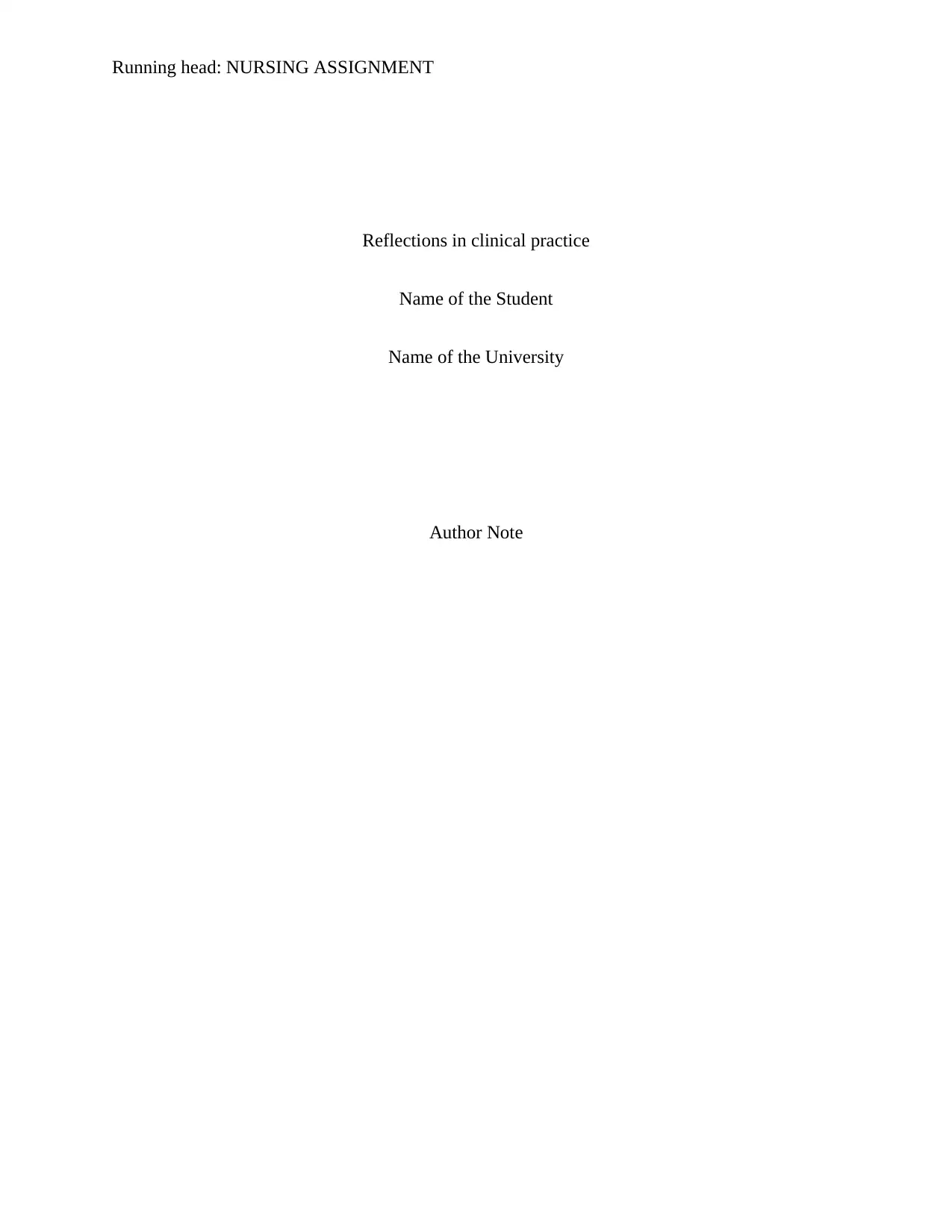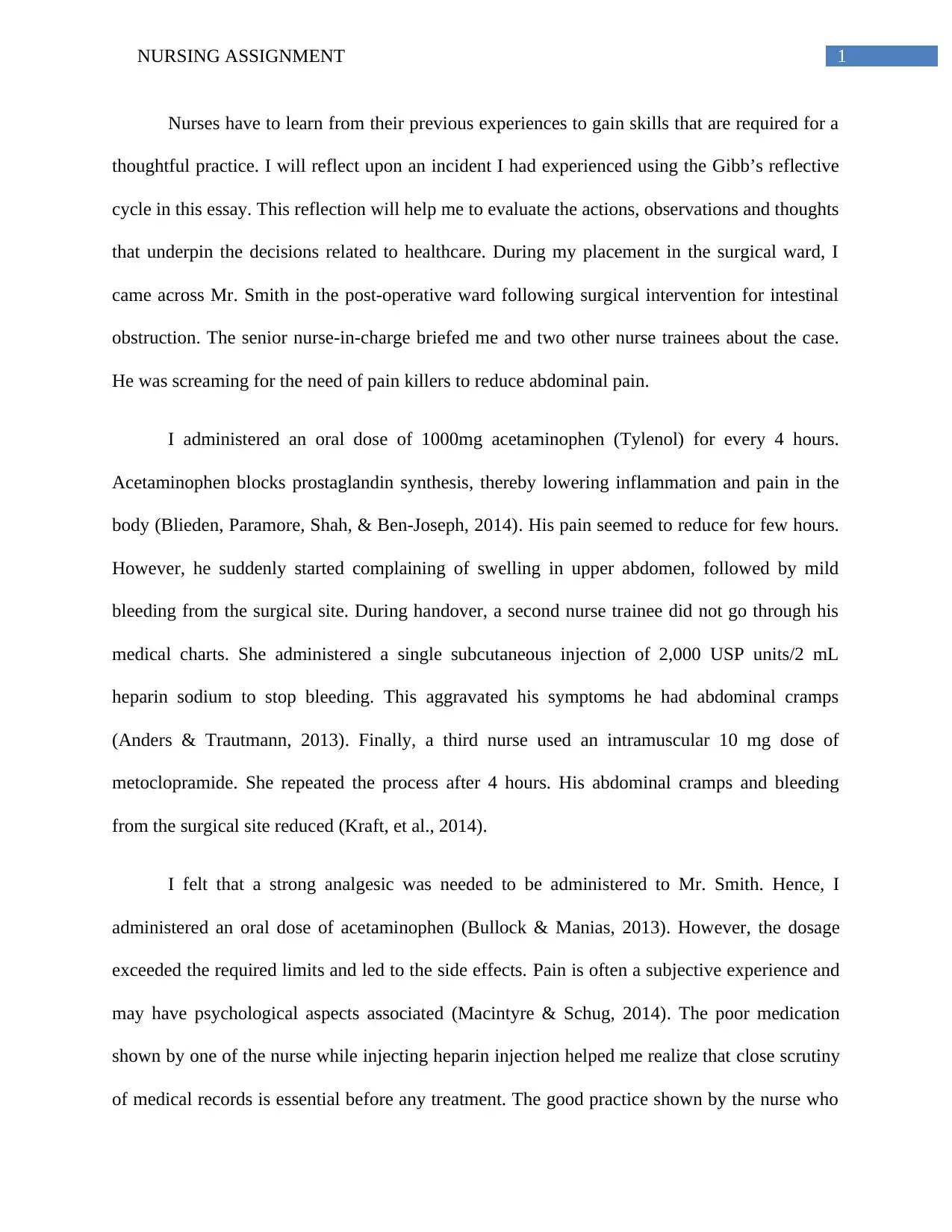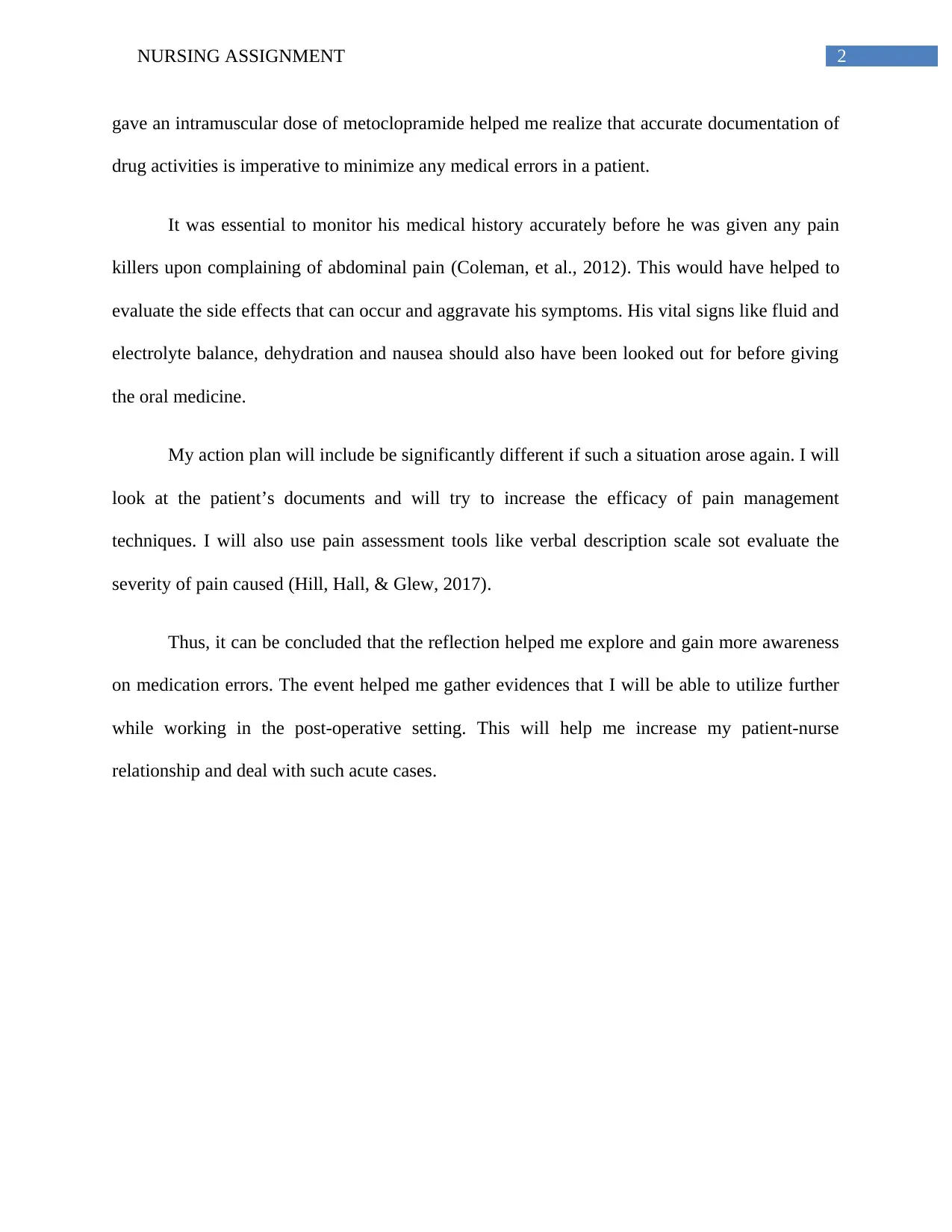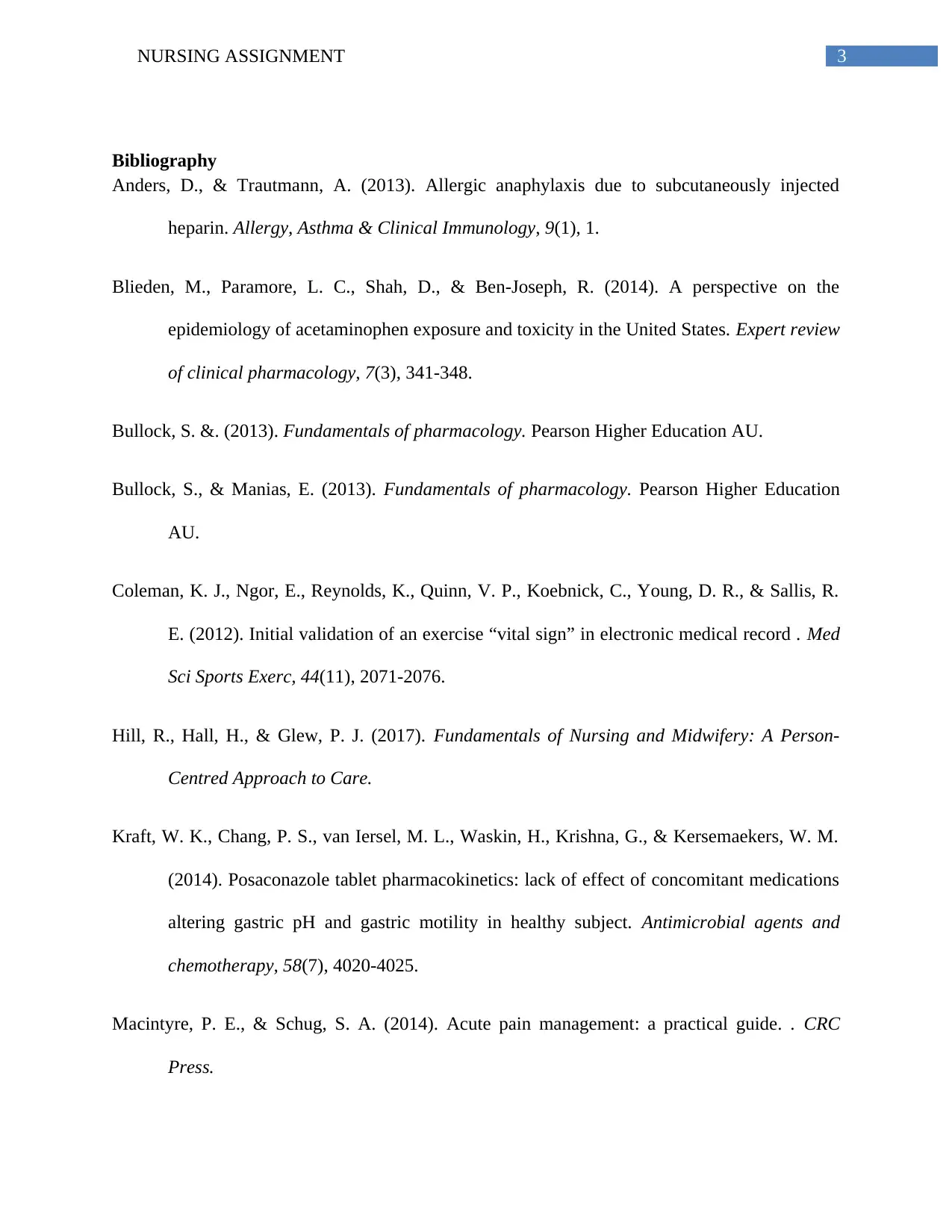Nursing Assignment: Reflections on Clinical Practice in Surgical Ward
VerifiedAdded on 2020/04/01
|5
|925
|51
Journal and Reflective Writing
AI Summary
This nursing assignment is a reflective essay detailing a student's experience in a surgical ward, focusing on an incident involving a patient with post-operative intestinal obstruction. The student reflects on the administration of medications, including acetaminophen, heparin, and metoclopramide, and the subsequent adverse effects and medication errors. The essay utilizes the Gibb's reflective cycle to analyze actions, observations, and thoughts, highlighting the importance of accurate medical record review, appropriate dosage, and patient monitoring. The reflection emphasizes the need for improved pain management techniques, the use of pain assessment tools, and a proactive approach to patient care to avoid medication errors and enhance patient outcomes. The student acknowledges the impact of the experience on their future practice, including improved patient-nurse relationships and handling acute cases.
1 out of 5












![[object Object]](/_next/static/media/star-bottom.7253800d.svg)